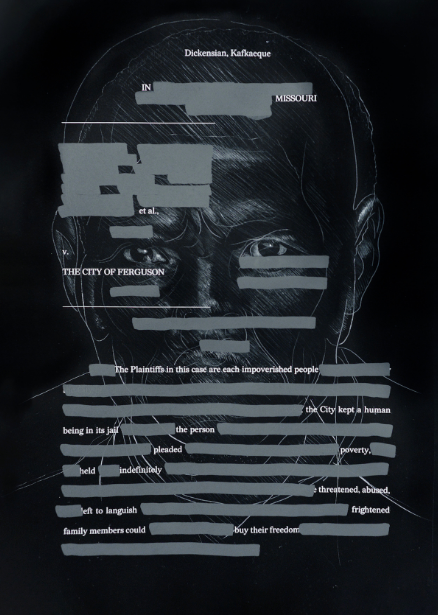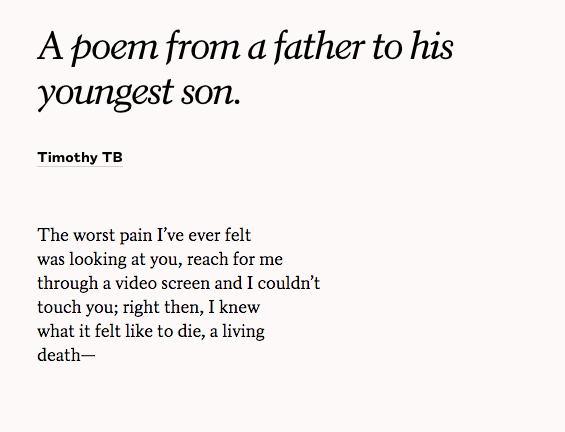The Power of Poetry: Shifting the Narrative in Criminal Justice Reform
April is National Poetry Month, which means there is no better time to dust off a volume or two from your bookshelf or tune into U.S. Poet Laureate Tracy K. Smith’s five-minute podcast The Slowdown (there are new episodes every weekday and it’s incredible).
Through my work at Spitfire with the Art for Justice Fund, a grant-making initiative that uses art and advocacy to revolutionize the criminal justice system, I’ve developed a deeper appreciation for the role of art – and poetry in particular – as a form of social justice that can change the public discourse in meaningful ways.
When many of us think about art or poetry, we are mentally transported to an elite museum or memories of high school English class – and not the frontlines of criminal justice reform. Yet, from poetry to theatre to the visual arts, Art for Justice Fund grantees are showcasing the power of art to shift narratives and humanize those impacted by our criminal justice system. Poetry, with its succinct, deliberate and emotionally-charged language, is an especially powerful way to bear witness to the stories and experiences of incarcerated and formerly-incarcerated people.

Take Redaction, a collaboration between the visual artist and filmmaker Titus Kaphar and poet, memoirist and attorney Reginald Dwayne Betts. Created with support from the Art for Justice Fund, the exhibition is now on display at MOMA PS1 in Queens, New York.
Redaction is a series of prints that confront the disproportionate impact of money bail and mass incarceration on low-income communities by sharing the names, faces and individual experiences of those affected.
Each print features the portrait of a person incarcerated for their inability to pay court fines or fees. Layered over each portrait is a poem crafted using redaction, a legal strategy that involves obscuring part of a text, on the lawsuit filed by Civil Rights Corps (another Art for Justice Grantee) on the person’s behalf.
Or consider the work that poets Clint Smith and Mahogany L. Browne have done to support and lift up incarcerated poets. Both Smith and Browne are recipients of individual grants from the Art for Justice Fund to support projects that examine the human cost of mass incarceration. Smith and Browne partnered with the Academy of American Poets to raise up the voices of people most impacted by mass incarceration. Smith used Poets.org’s Poem-a-Day series to elevate the work of those directly impacted by the prison system.
One of these poems, “A poem from a father to his youngest son,” by poet Timothy TB, provides the reader with an intimate understanding of the devastating emotional impact that mass incarceration has on both detained individuals and their loved ones.

Meanwhile, Browne wrote a series of essays that document communities most harmed by mass incarceration, with a focus on women and children. One of her essays, Net Worth of Black Girls, examines the policing of Black girls by the criminal justice system, including its spread into schools, and the physical and emotional violence that ensues. Browne humanizes this issue through tangible stories of Black girls experiencing mistreatment within this system, including a poignant example from her own life.
As I began to dive deeper into how poetry was being used in criminal justice reform work, I started to understand its impact on issues that directly relate to my life and identity. As a lesbian and a white cis-gendered woman who is not living with a disability, poetry has played a significant role in helping me become a stronger ally to my LGBTQ family. By reading and sharing the work of queer poets of color, trans- and gender-nonconforming poets and queer poets with disabilities, I’m able to center their voices and stories, while also supporting a positive shift in the narrative landscape.
In her essay “Poetry Is Not a Luxury,” iconic feminist and poet Audre Lorde, who described herself as “Black, lesbian, mother, warrior, poet,” wrote:
Poetry is not only dream and vision; it is the skeleton architecture of our lives. It lays the foundation for a future of change, a bridge across our fears of what has never been done before.
In the criminal justice reform movement, poets are advocates and architects — using their words to build bridges across a divide, fed by mass incarceration, which runs deep. And with poetry readership among U.S. young adults, aged 18-24, more than doubling from 2012 to 2017, those who are looking for a creative and engaging way to impact the discourse should take note.
This entry was posted on Tuesday, April 30, 2019 at 09:14 am and is filed under Ethical and visual storytelling and Frame, narrative and message development. You can follow any responses to this entry through the RSS 2.0 feed. Both comments and pings are currently closed.